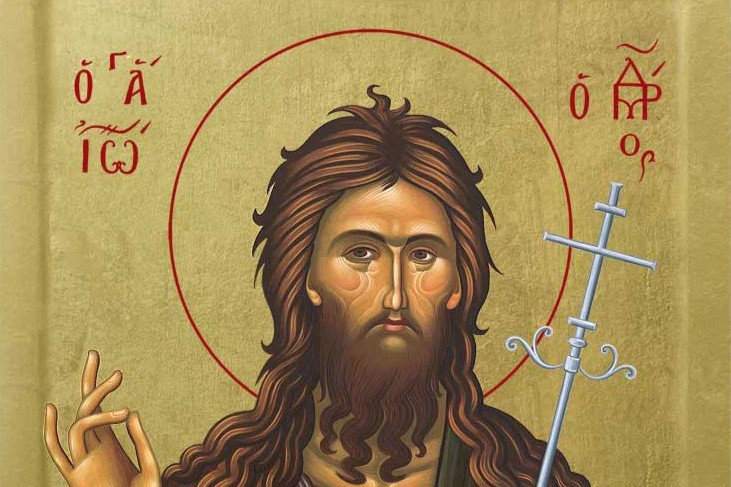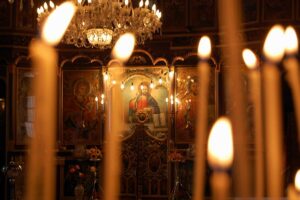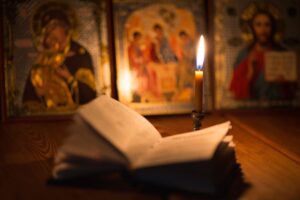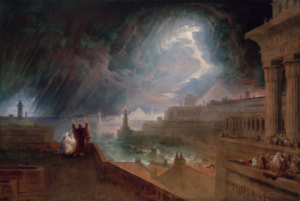Actually there are three recorded instances in which John the Baptist’s severed head was found. Holy Scripture states that after John was beheaded his disciples took the body and laid it in a tomb (Matt. 14:1-12 & Mark 6:14-29). No mention is ever made of what happened to John’s head after it was presented to Salome. According to ancient tradition, however, his head was discovered by two monks who were exploring the palace of King Herod, who then transported it to the town of Emesa where it was venerated as a relic. Sometime later, it came into the possession of another monk, a hermit called Eusathius, who lived in a cave. Being the guardian of the Forerunner’s head, Eusathius became well known for performing miracles, but claimed credit for himself instead of acknowledging the intercessions of St. John. Because of this, the locals eventually chased Eusathius out of the area. The head was left in the cave until it was discovered a second time and then transferred to a monastery in Emesa in about 452.
Many years later, in about 850, the head was rediscovered in the monastery and taken to Constantinople, where it was venerated by the faithful. This, then, was Third Finding of John’s head and is commemorated on May 25. The Forerunner’s head remained in Constantinople until it disappeared or was destroyed either in 1204, when Constantinople was sacked by the Crusaders, or in 1453 when the city fell to the Ottoman Turks.
This is a kind of rumor, however, that has been perpetuated over the years which states that because John the Baptist was also revered by the Muslims as a “righteous prophet,” his head was taken to Damascus and resides hidden in a mosque. Whether there is any truth to this has yet to be proven, but if it is, we just may have a feast for the Fourth Finding of John’s head someday!







